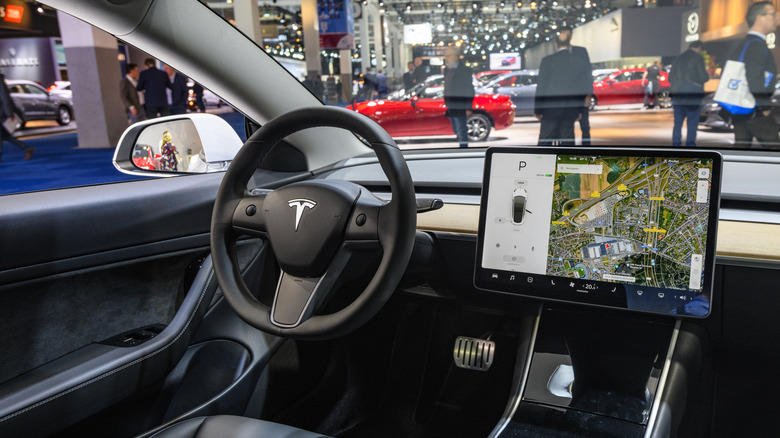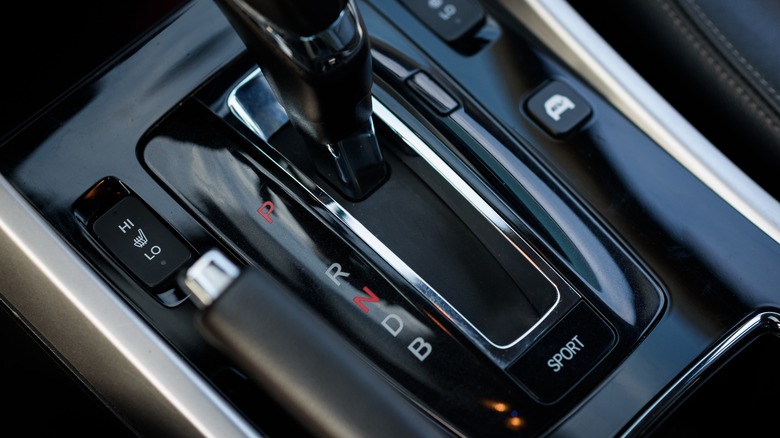A lot of things change when a car is powered by batteries versus when it’s powered by internal combustion. You already know about the most notable benefits, like the low center of gravity thanks to mounting the batteries low-down in the vehicle, and of course, the lack of tailpipe emissions. These are some of the major ones that EV evangelists (or maybe that should be «EVangelists?») like to ramble on about, but there are many more features that make EVs a worthwhile investment.
With relentless improvements in technology, electric cars now offer much more than just low centers of gravity, breakneck acceleration, and no tailpipe emissions. Automakers have cleverly used some of the less talked about benefits of EVs to leverage groundbreaking features that drivers never would have thought possible. Frankly, some of these features are so cool and useful, every car should have them, as impossible as that may be.
California Mode – Fisker
You’d be forgiven for thinking that Fisker as an automaker is completely cursed. The brand first appeared at the beginning of the 2010s with the wild Karma PHEV, which eventually flopped entirely. A couple of years ago, Fisker introduced a new model, still with the goal of making electrified automobiles but with a slightly different approach. The first fruit of the labor is the Ocean, a relatively affordable compact electric SUV that recently went on sale.
The Ocean offers an EPA-estimated range of up to 360 miles and up to 564 horsepower from its dual-motor setup. What differentiates the Ocean from its electric SUV brethren is its quirkiness. As well as looking like something straight out of a cyberpunk anime, the Ocean is packed with wild features, the best being California Mode. Activating it will cause every piece of glass except the windshield to roll down at once, and that includes the rear window.
This turns your compact electric SUV into a proper open-air experience. While this doesn’t exactly land in the «useful» basket, it’s definitely a cool feature, and it’s also a pretty easy way to get a lot of air and wind into the interior quickly. Shame that the revived Fisker is in dire straights once again.
Sentry Mode / Gear Guard – Tesla and Rivian
One leg up that electric cars have over gasoline-powered vehicles is that they don’t have to be started up and shut off in the traditional sense of the word. EVs are simply on, or off, and there’s no starting involved. This leads to a few interesting benefits, one being that an EV can always technically be on, especially if it’s plugged in and charging. This allows automakers to open the floodgates for interesting features, including a makeshift surveillance system.
That comes in the form of Sentry Mode in Tesla vehicles, and Gear Guard in Rivian vehicles. Despite the different nomenclature and Rivian’s use of an adorable cartoon mascot, both systems function in the same way. The exterior cameras on the vehicle, normally used to aid parking, remain on to monitor everything going on outside.
It also lets prying eyes know that they’re being watched and that any attempted fibbing or theft will be reported to the owner of the vehicle the next day. It’s a genius idea that’s better than an alarm system, which can easily be flummoxed depending on its complexity or lack thereof. Rivian recently took Gear Guard a step further, as the cameras can now record your driving. Helpful if you want to post some footage of a trail and the scenery you recently visited.
G-Turn – Mercedes EQG

Jerritt Clark/Getty Images
What started as a humble military vehicle became every celebrity’s favorite SUV to prance around in on Rodeo Drive. The Mercedes G-Class, which was just recently refreshed, is an absolute off-roading and jet set icon, and despite looking essentially the same for well over four decades, it’s a very different beast than what it used to be. The G-Wagen has explored quite a lot of frontiers in its production run, and it’s about to explore a new one that many consider sacrilege: electric power.
The arrival of Mercedes’ new electric G-Class, all but confirmed to be called the EQG, is imminent. Although old-school G-Wagen fans will lament the lack of a big gasoline V8 or even a mighty bulletproof diesel, the electric off-roader market is starting to gain a lot of traction, thanks in no small part to Rivian. Mercedes’ EQG will not sacrifice the model’s legendary capability, something proven further by the EQG’s most talked-about feature: G-Turn.
G-Turn, or tank steer, uses the EQG’s individual wheel motors to rotate the truck 360 degrees while remaining completely stationary. On the production model, paddles on the steering wheel will be used for this functionality, and it could be a total game-changer for off-roading. Or to turn heads on Rodeo Drive, whichever you prefer.
Vehicle to Load (V2L) Charging
Electric cars need charging, as we all know. It’s also true that more powerful electronic devices can charge smaller ones, say when you plug your phone into your laptop’s USB port. Automakers are now offering something very similar with vehicle-to-load charging, or VTL/V2L. The most notable examples of this are the most recent Ford F-150 and the Hyundai Ioniq 5 and its siblings.
Thanks to the 800V architecture, the Ioniq 5 and its siblings can use the juice from its batteries to power various different electrical or electronic devices. It can be used to, say, top up an electric bicycle as the photo demonstrates, but that’s not all. Coffee machines, electric grills, laptops, camping equipment, you name it. The other example of this is the Ford F-150 Lightning.
The F-150 Lightning can provide up to 9.6 kW of power, which is plenty for even the highest of draws like electrical heaters. However, one of the main talking points about the F-150 Lightning is its ability to power an entire home for up to three days, should there be a power outage, along with the ability to permanently wire in the charger that makes that possible to your home’s entire electrical system. Vehicle-to-load and vehicle-to-grid charging are absolute game changers, and they have the potential not only to save the day, but also your life.
Custom sounds
A notable feature of electric cars that enthusiasts love to complain about is the lack of any engine noises. Electric cars are largely silent, so they lose some of the personality and the combusting gasoline concerto. However, because electric cars are quiet by default, they can also sound like just about anything you want. Automakers have taken this idea a step further by providing full-on sound experiences that can mimic the sound of an ICE, but don’t necessarily have to.
The BMW i4, for example, offers the IconicSounds functionality. Featuring a sonorous sound experience engineered by Hans Zimmer of Hollywood fame, the i4 M50 provides a good amount of audible drama behind the wheel to back up its solid performance. Other automakers are taking it a step further.
Hyundai has given the Ioniq 5 N a sound profile that mimics the sound of a turbocharged four-cylinder engine like you might find in, say, the Elantra N or i30 N, as well as simulated gear changes like you would have on a DCT-equipped version of those N models. There’s also the new Dodge Charger Daytona, which has an actual chamber designed to shape the sound coming out of the speakers, creating something similar to an engine sound. Dodge calls it the Fratzonic Chambered Exhaust, and they are aiming for a sound similar to a Hellcat. It’ll be just as loud as one, too.
Preconditioning / Dog Mode

Sjoerd Van Der Wal/Getty Images
Dog mode ties, once again, to electric cars’ ability to essentially be on all the time. As well as being able to monitor their surroundings at all times, electric cars can also power up their comfort features long before you’ve stepped foot inside, or indeed, long after you’ve left the vehicle. The most famous preconditioning feature in the EV world remains Tesla’s Dog Mode. As the name implies, Dog Mode allows you to leave your pets in the car, provided you plan to return quickly.
As well as keeping the AC running, Teslas inform passersby who may think you’re a careless pet parent that your loved ones are doing fine on the inside. Other automakers have settled on a more conventional, but still fantastic rendition of this feature. If your smartphone is tethered to your EV, you can use the app to precondition the interior.
In the summer, that means immediately cooling down and shielding from the heat as soon as you step in, and in the winter, it means the interior is nice and toasty when you arrive to the vehicle, not to mention a windshield completely free of mist and ice. The closest that ICEs got to this is remote start.
Big space in tiny packages
Almost every electric car is built on a skateboard platform, with the batteries mounted low-down. Combined with the lack of an engine, and the lack of a majority of drivetrain hardware that gas-powered cars need to get the power to the road results in some serious space benefits. Electric cars can have massively long wheelbases, thanks to the ability to mount the wheels at the very corners of the vehicle. There have been gas-powered vehicles over the years with wheel-at-each-corner designs, but in electric cars, the benefits of that are even greater.
The rise of tiny electric cars hasn’t left behind having tons of space on the inside, to the point that they could embarrass hatchbacks from the class above. The Renault 5 E-Tech Electric, for example, squeezes 100 inches of wheelbase into a body measuring just 154.3 inches. Volkswagen’s upcoming ID.2, meanwhile, promises over 15 cubic feet of cargo space in a similarly tiny footprint.
Obviously, this phenomenon exists in larger electric cars as well, with most electric crossovers and sedans offering up a good deal more room than their internal combustion engine-powered counterparts. Without the packaging constraints that gas-powered cars have to conform to, electric cars can carry a whole lot more people, and a whole lot more stuff, too. It’s enough to make one wish that more of these tiny electric cars were sold in North America.
One-pedal driving

Sergii Sobolevskyi/Shutterstock
Electric cars have had one-pedal driving and regen braking since the experimental electric cars of the 70s. As well as making driving a lot easier, it also brings benefits to both the car’s physical brakes and the range. With regen braking activated, upon letting go of the accelerator pedal, the electric motor no longer spins the wheels, but the forward momentum starts to generate electricity.
This doesn’t use the car’s actual brakes, and the regen braking system can also recuperate the lost energy and use it to add some juice to the batteries, improving the car’s long-term efficiency. While the improvements are negligible on longer journeys, electric cars can be over 70% more efficient through continued and proper use of regenerative braking, which is a serious figure.
As well as increasing the life of the car’s actual brakes, regen braking nets one more important benefit: one-pedal driving. When you dial it up to the max, regen braking essentially eliminates the need for the actual brake pedal much of the time, just throttle on and throttle off. There’s a good reason why regenerative braking remains one of the most important electric car features.